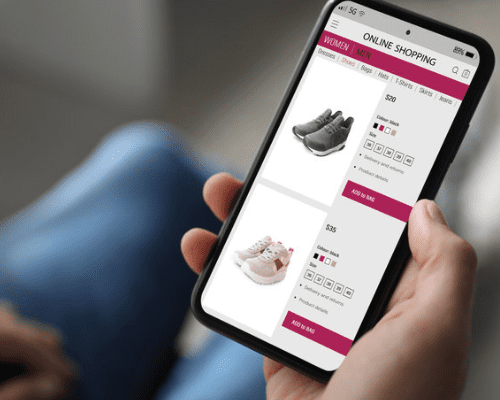Customer advocacy definition
Customer Advocacy is described as a specialist form of customer service in which companies focus on what is deemed to be best for the customer.
A lot of people confuse the difference between Customer Advocacy, Customer Experience and voice of the customer (VOC). So while we are defining customer advocacy, let’s add some clarity to this customer-centric topic.
Customer Experience encompasses all experiences a customer has with your brand. This includes their interaction and experience with products, services, processes, policies, the expectations you set, and many other factors. Essentially, it’s the big picture, and is often referred to as the ‘end-to-end customer journey’.
VOC is the process of capturing and consolidating input from customer about their experiences. Its pursuit is to understand the customer needs, wants and perceptions. This is where you obtain the vital information needed to really understand your customers.
Customer Advocacy on the other hand is about taking action. It draws insight from the voice of the customer and turns them into actions that can solve problems for your customers and improve their experiences. Customer advocacy should span across the entire customer journey.
What is customer advocacy?
Advocates are more than just repeat buyers. They are the crux of your business. Customer advocacy demonstrates empathy and competence during interactions that are memorable and above and beyond. Advising customers how to resolve their issues succinctly and in an engaged way. It views each customer interaction as an opportunity to learn more about your customers’ needs.
Why is customer advocacy important?
Now that we know what customer advocacy is, let’s find out why it’s important. Customer behaviour has been influenced by evolving market forces. Including:
An decrease in trust of large institutions.
The ability to instantly tap into a large data stream and crowdsource advice from strangers on social networks.
Ease of engaging with a much larger network of colleagues and peers.
It is no surprise that industry leaders in almost every sector are also the advocacy leaders too. For example, Toyota’s sales fell by almost 10% this Spring, even though they spent $4.6 million on marketing. Whereas, Tesla, with a marketing budget of $0, saw their sales soar. Customers pre-ordered 253,000 cars in 2 days after the Model 3 was released. That’s a total of $10 billion, even though the cars weren’t to be released until later that year.
Why is this? Well you can read more about their success here, but let’s bring this back to advocacy. Despite a marketing budget of $0, they generate a 40x ROI. How? Through their referral program, which incentivises their advocates with rewards such as, raffle entries to win the P90D Model X, invites to unveiling events, Tesla wheel rims and other Tesla merchandise. Their referral recipients are in turn rewarded with $1,000 off their purchase along with federal and state incentives.
The Tesla referral system works because they have a fantastic, innovative and eco-friendly products, as well as infrastructure that makes it easy (and cheap) to refer new clients and reward existing ones. They let their customer advocates do the marketing for them. The impact of this is phenomenal. Essentially, they have a huge unpaid sales force that’s substantially more efficient than any sales team that they would have hired.
Advocacy a kind of like a beneficial virus. Imagine the cycle; a company that is built with advocacy, has a lot of advocacy. Those new customers that become a customer because an advocate recommended them, they, themselves, are much more likely to advocate.
Ultimately, there is a culture of advocacy from the start. These companies rocket up to being industry leaders. They are so much more efficient regarding their sales and marketing and they have got the culture that encourages this sort of positive feedback to continue to happen.
How customer advocacy is important for your business
Customer advocates, those at the highest level of loyalty, can help your business tremendously. Likewise, who are alienated, the lowest rung of the advocacy ladder, can be extremely detrimental.
It is extremely important to listen to and take care of both of these groups equally. From his study, DR. Rao found that 60-70% of his B2B group polled shared their experiences word of mouth. What you want 60-70% of your own customers to say about your company and product?
How does customer advocacy impact marketing departments?
Customer advocacy is a customer-centric strategy that can be integrated into your marketing plan easily. You can leverage your most loyal customers as brand ambassadors to build awareness and trust, drive sales and strengthen customer relationships. Not to be confused with influencers, who already have an established presence online, customer advocates are your everyday customers, who are much more relatable.
Having a customer advocacy strategy can be a game-changer for a business that is trying to stand out. But remember, hearing is not the same as listening. Hearing is passive while listening is active, so act on what you discover. Listening shows respect. It’s a secret weapon very few brands have.
By collecting customer feedback you will gain all sorts of insights into what your customers want and expect from you. It could be, faster delivery, better communication or improved customer experience. Matching customer feedback with your business’s data will help you achieve a much clearer picture of the situation, improve your customer experience and go after the right opportunities.
Similarly, identifying a dip in numbers and receiving negative feedback from your customers could help you to quickly understand where your business needs to invest more time and effort to improve the experience for future customers. You can gather this feedback by using a survey, asking for reviews, reaching out directly and gleaning insights from user activity from your analytics.
Customer advocacy and gamification
Gamification is about creating exceptional experiences to speed up the advocacy process. It is about making interaction with companies easy; making it fun and rewarding. Many gaming apps achieve this exceptionally well. They build things to make it more addictive. Businesses are able to get feedback, receive social capital and create something that is fun and gamified, so people want to come back and experience it again and again.
This gamification is what keeps up swiping, liking and consuming more social media time than ever. Former Google employee, Tristan Harris, explains how the pull-to-refresh function, where a user swipes down and waits to see what content appears, very quickly became one of the most addictive and pervasive design features in modern technology. “Each time you’re swiping down, it’s like a slot machine. You don’t know what’s coming next. Sometimes it’s a beautiful photo. Sometimes it’s just an ad.”
The designer who created the refresh feature, first used by Twitter, was Loren Brichter. He has claimed to be surprised by the longevity of the feature. In an age where instant notification technology exists, and apps can automatically update content without being nudged by the user, “It could easily retire”, he says. However, it seems to prevail to serve a more psychological purpose. Let’s be honest, if gamblers didn’t get to pull the levers themselves, slot machines would be far less addictive.
Customer advocacy goals?
You can look at this in two ways. Your goals and customer advocates goals. Either way, they need to be aligned. Your goal is to turn customers into advocates and referrers. With this, inevitably, will come a number of benefits in terms of financial gains and company growth.
On the other hand, an advocates goal is to inform and for doing so, be rewarded and feel valued. In turn, the advocate feels like they are part of something bigger, have been given the opportunity to be heard and feel like their feedback matters.
What does it mean to be a customer advocate?
Quite simply, it is born from a change and shift in company culture, that focuses on the customer. It is a relentless mission to focus on the customer’s needs. This customer-centricity is supported by marketing techniques that will generate better customer experiences and in turn, will create customer advocates.
A company culture that puts the customer first, means pledging that you’ll never pull a fast one over your customer to make a quick buck, or lie to them to land a sale. It means you make a commitment to provide nothing less than exceptional support and service.
How can you identify and support your customer advocates?
There is no excuse to not do advocacy marketing. It could be as simple as just having a meal a couple of times a year with some of your best customers. No agenda, other than to get people together and to ask how to improve and maybe share a little bit about where you’re going as a company. That alone should cost very little.
By giving them this exclusivity and saying, this dinner is not just for anyone of our customers, it’s for our most special customers. Not because they buy a lot from us, this isn’t about money, but because you get it! It’s because you believe in our journey and in turn, we think that your ideas matter. We think our other customer will care about them too, so we want to spend more time listening to you. We want to take care of you. That message will always be well received.
Just beginning with a simple dinner or evening drinks is inexpensive, but has a high ROI. The next step is to centralise your advocacy with an individual champion. Many companies who are already investing into advocacy have four or five different people, who are each doing little bits towards advocacy here and there with very little impact, consistency or synchronisation.
For example, you might have one person in charge of referrals and another person in charge of talking to customers. The problem is that with this disjointed approach you are missing out on potential advocacy. By having one person with a complete 360 overview of all aspects of advocacy, you can easily identify opportunities and leverage relationships, so that you can cross-pollinate advocacy effectively in all areas of the business.
By having a single advocacy champion in your company, it shows a lot of respect and appreciation to your advocates. If you just do these two things alone without buying any fancy software, you’ll get a lot more out of advocacy and it could be quite transformational.
The statistical argument for customer advocacy
Here are some of the stand-out stats for why you need a customer advocacy program:
Why customer advocacy should be at the heart of your marketing
Humans advocate more when they feel like they are part of something, like a tribe or community. They are more likely to act on something when they feel like they are part of something that is bigger than themselves.
If you use marketing to communicate the impact of those referrals you give back to those advocates and let them know that what they have done has made a difference. So, if they have written a guest blog post, joined a podcast discussion panel or made a direct referral, let them know how many views and listens they have received and how their referral is progressing.
If your advocates are experiencing greater social capital because of their advocacy to your business, such as benefits to their life or their career, as a result of the advocacy they are making, they are going to be more likely to continue to make more recommendations.
Ways brands today are leveraging their advocates
There are many ways you can leverage your advocates:
Rating and reviewing products
Creating testimonials
Getting friends to join loyalty clubs
Recommending your brand, product and services by clicking on an ‘I recommend this’ tab
Sharing content like video and how-to-guides with their social networks
Sharing promotional offers with their social networks and driving qualified leads and sales
Responding to blog postings about the brand, product or service
Having advocates provide feedback about why they recommend a brand, product or service
Having advocates give ideas on how to improve a company’s product or service
All of this, and more, can help guide individual interactions. Such as, a reservation agent being able to recommend an earlier flight for $200 cheaper. It can be the catalyst for many changes, such as opening a customer service help desk on weekends to match customer preferences.
It could also be a driver for dramatic change. When Steve Jobs returned to Apple, he removed a number of products the company had already invested heavily in, which actually lead to the success of the company.
Instead, he focused on others that were aligned with customer needs. He said, “You’ve got to start with the customer experience and work back toward the technology – not the other way round.” That is customer advocacy leveraged beautifully.
Customer advocacy programs
Having customer advocacy is your silver bullet against stiff competition and low customer loyalty. It is how you set yourself apart from your competition. Customer advocacy marketing programs increase revenue by improving customer acquisition and retention.
IDC research found that only 10% of B2B companies surveyed had a customer advocacy program in place. This year, ‘The role of customer marketing advocacy’ report found that has increased to 67%, which is a 570% increase.
When companies do advocacy programs, they achieve a lot more advocacy. As long as they give it the right name, it produces the best experience and has the right branding, it can really make people feel like they are part of an exclusive club.
Customer advocacy program best practices
Get ready internally:
Dedicate an internal staff member to manage the program. Someone with a background in influencing relationships and that is social media savvy.
Develop a content plan to constantly fuel the advocates with topics and a timeline with upcoming product releases, ahead of anyone else.
Find the right advocate that will represent your brand:
They should have a demonstrated track record. They should be respected and have influence in the community.
Build a relationship for the long term:
It is best to start of by building trust. Invite your select group of advocates to your headquarters to meet with the key product teams. Acknowledge their ideas without any defensive behaviour.
Give them a platform (but do not pay them):
The basis behind an advocacy program is to give fans an easy platform for communication. A group blog or community for them to tell their stories.
Acknowledge and integrate them into your business:
Integrate your key advocates into your existing events, product launches and even meetings with the product teams. By combining customer opinions with your product team, a business can create a very successful product launch.
Customer advocacy example
Let’s look at a few examples of how the power of advocates can work. I’m thinking of buying a TV, now the old school process would look something like this:
Go in to the store, speak to an ‘expert’ and let them tell me what I needed. Maybe I would have snuck off and bought it elsewhere online.
Now compare this to the complexity of channel and choice, as well as freedom I now have. The new school process gives advocates more room to influence:
I poll friends on Facebook and ask if any of my friends had purchased a TV recently. After reviewing some suggestions, I research comments on Twitter, finishing with a few tech blogs looking for info on the models mentioned.
The result? I end up hearing from true customer advocates of the products I am reviewing, as well as some other vocal voices imploring me to avoid certain products.
Another example of customer advocacy in action is for HP computers customer support forum. The company celebrated their 1 billionth page view on their customer support forum in 2012. A large part of support provided on those forums mostly come from their most loyal and passionate customers, not HP support staff.
HP customer and support expert, Mark Vail, more commonly known as his username ‘wyrenut’, dedicates his time to helping others. He often spends 20 to 30 hours of his leisure time per week. He said he finds volunteering his time to help fellow HP customers on the forum very rewarding.
“I started using HP products 10 years ago and when I posted on the forums, I would have people who’d come to me with problems like: ‘I’ve just lost the pictures of my recently departed child’ and I can’t get them back. How do I get them back on my computer?”
Vail said helping fellow customers felt good. “You feel like you’re really making a difference in society.”
So, how valuable are advocates like Vail to companies like HP? Consumer support forums manager Jason Duncan says ‘really valuable’. “When Mark comes along and he solves a question, on average that question is viewed over 1,500 times, so the ability that a knowledgeable expert like Mark has to help our customer base is really valuable.”
We wrote a blog on what Disney can teach you about customer loyalty, so we won’t go into that in more detail here. Instead, take a look at how Waitrose gathers customer reviews online and then uses them in its stores to attract shoppers to certain products. The customer voice is incredibly authentic and persuasive and performs very well on merchandising opportunities such as this.
How to create true customer advocates
There are a number of ways to cultivate brand advocates. To start, focus on building relationships. What makes a customer fall in love with your brand? A quality product, excellent customer service or consistent and reliable experience. Begin with the fundamentals and remember their name!
Service with speed. When purchasing online, 71% of visitors expect help within 5 minutes, so it’s important to provide help when a customer needs it, without delay.
Share successes. Don’t be afraid to talk about your customers if you have something positive to share. Feature reviews in ads, share results in case studies and always mention your customers.
Reward customers. Provide sneak peaks into new products and services, host special invite-only events, send exclusive offers, create a loyalty program and provide a VIP service.
Surprise loyal customers when they least expect it, and they will talk about your surprise, and you. It could be anything from thank you notes to free upgrades.
Remember special occasions by sending customers a card or gift on that date. It’s a simple way to deepen their personal connection with your brand.
Solicit and act on feedback. Act for feedback, but please do act on it. Consumers become advocates if they feel like their feedback is heard and their input is valued.
Lastly, say thanks even to the detractors. Recognise and thank all feedback, event he negative. If unhappy customers feel valued, they will stick around longer.
The future of customer advocacy
If we focus on why customer experience is so important and the role that marketing will have to play in customer experience, we establish the direction customer advocacy is going in over the next few years.
One of the things we notice is that some of the most successful companies globally will be engaged and obsessed with customer advocacy.
Buyers will become inundated with emails and websites running remarketing campaigns, so marketers are going to need to have better control over the customer experience and leveraging advocates to do the marketing for them. They will need to utilise marketing automation more effectively to support the customer journey.
Better customer experience is going to be the main source of where the best leads are going to come from, especially those that are more likely to convert.
We are already starting to see marketing and customer success beginning to blend a little bit. Which is very much akin to how sales and marketing began to come together, under the idea of a standard definition of a lead. There is a similar thing that is happening now. Customer success, marketing and product teams are all joining to agree on defining what the optimal customer experience is, which is an exciting development.
Marketers who can get on board and understand this new language of customer experience and be able to drive it are going to do very well over the next few years. Marketers are already getting good running cross-functional, multimodal, nurturing-style campaigns to drive leads, although there is still a long way to go.
Instead of thinking about how to bombard people to do what you want them to do, it’s more about finding the right individuals who are relevant and trusted that can carry that message for you. The word literally travels instantly and spreads virally not just across your own town, country, or even your country, but across the whole world.
If you have any experiences, good or bad about redk, we would love to hear your feedback by commenting on this post or contacting us directly.
Customer Advocacy FAQs
Why do brand advocates share information?
64% offer advice, 61% praise a brand, 52% criticise a brand and 51% share brand content.
Where do brand advocates share information?
58% share on social media, 53% share via email, 43% share on an eCommerce site, 28% share via online chat/ticket and 27% on boards/forum.
Why are brand advocates so valuable?
They are 83% more likely to share information and 50% more likely to influence a purchase decision than a regular customer.
How can I monetise customer advocates?
90% of consumers report that a word-of-mouth recommendation is a leading influence on their purchasing decision. Advocates spend 2x more than average customers on favourite brands. Loyal customers are worth up to 10x the value of their first purchase. A 12% increase in advocacy represents a 200% increase in revenue growth.
How does customer advocacy compare to other channels?
Word-of-mouth generates over 2x the sales of paid advertising. People trust friends and family. 92% of consumers trust recommendation from people they know. 84% of consumers will take action based on recommendations from people they know.
Why should I implement a customer advocacy program?
There is still an advocacy gap meaning huge potential. Less than 10% of brands have over half of their social media mentions classified as having strong positive advocacy. 58% of companies don’t know who their brand advocates are. 80% of brands don’t leverage advocates in their marketing.












